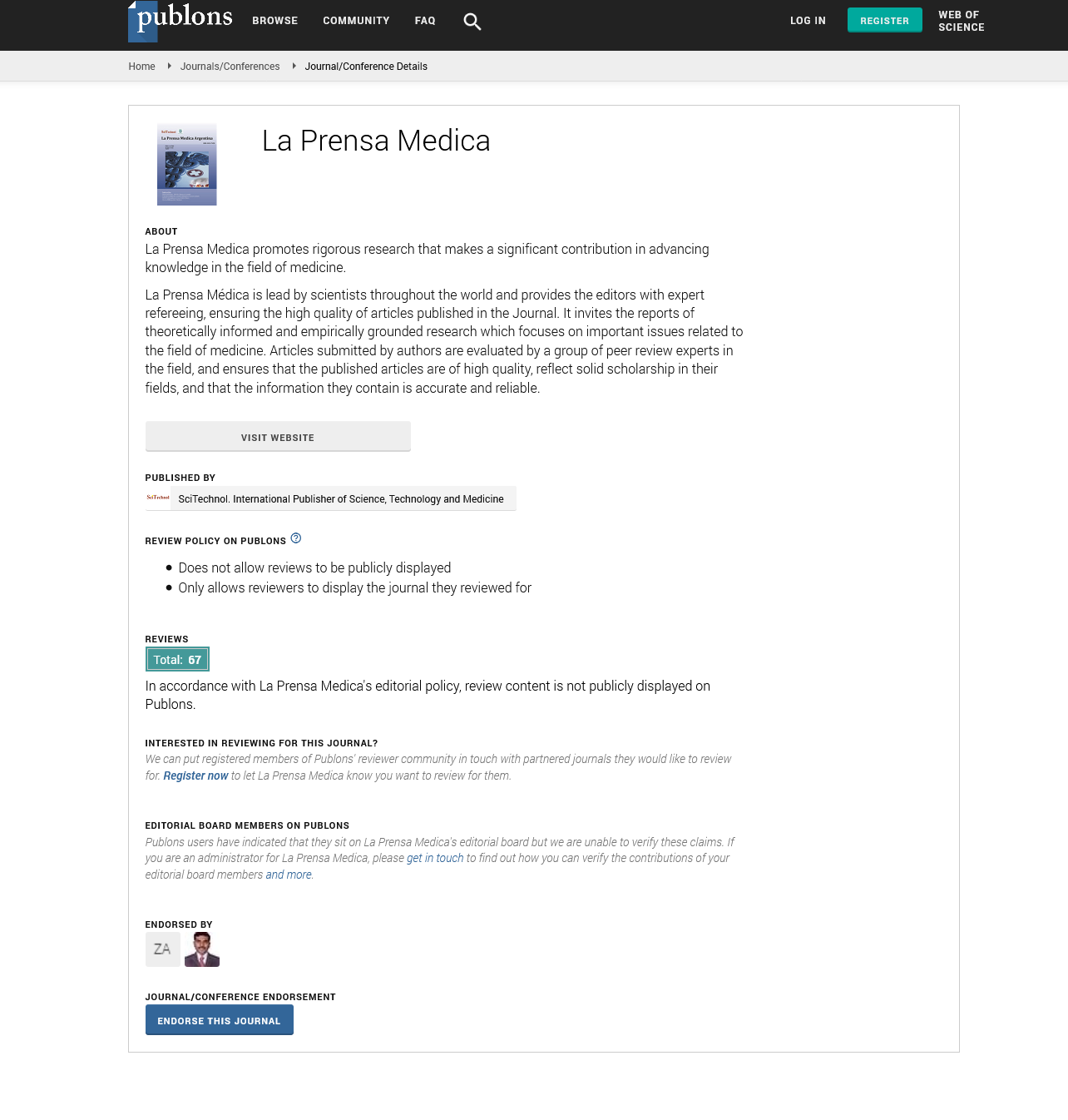Opinion Article, La Prensa Medica Vol: 109 Issue: 1
Ranolazine Reshaping the Landscape of Angina Therapy
Pandula Crager*
1Department of Cardiology, Royal Papworth Hospital, Trumpington, Cambridge, UK
*Corresponding Author: Pandula Crager
Department of Cardiology, Royal
Papworth Hospital, Trumpington, Cambridge , UK
E-mail: cargerp23@cantab.net
Received date: 28 March, 2023, Manuscript No. LPMA-23-100493;
Editor assigned date: 31 March, 2023, PreQC No. LPMA-23-100493 (PQ);
Reviewed date: 14 April, 2023, QC No. LPMA-23-100493;
Revised date: 21 April, 2023, Manuscript No. LPMA-23-100493 (R);
Published date: 28 April, 2023, DOI: 10.4172/0032-745X.1000150
Citation: Crager P (2023) Ranolazine Reshaping the Landscape of Angina Therapy. La Prensa Medica 109:1.
Description
Angina pectoris is a common symptom of Coronary Artery Disease (CAD) and is characterized by chest pain or discomfort. It is a condition that arises when the heart muscle does not receive enough oxygen-rich blood due to narrowing or blockage in the coronary arteries, which supply blood to the heart. Angina pectoris is often described as a squeezing, tightness, or pressure sensation in the chest, but it can also manifest as pain in the shoulders, arms, neck, jaw, or back. The pain typically occurs during physical exertion or emotional stress when the heart requires increased oxygen but is unable to meet the demand.
Angina pectoris is a significant clinical concern as it not only causes discomfort and pain but also serves as a warning sign of underlying heart disease. If left untreated, it can lead to more severe conditions such as heart attack or myocardial infarction. It is important to recognize and diagnose angina pectoris promptly to initiate appropriate management strategies and reduce the risk of complications. Treatment options for angina pectoris include lifestyle modifications, medications to relieve symptoms and prevent further episodes, and invasive procedures like angioplasty or coronary artery bypass surgery to improve blood flow to the heart. Ranolazine is a relatively recent addition to the anti-anginal medication arsenal. Ranolazine has emerged as a novel treatment option for the management of angina due to its distinctive mechanism of action and clinical outcomes. This examination report plans to investigate the rise of ranolazine as an enemy of anginal specialist, zeroing in on its system of activity, clinical adequacy, security profile, and future headings for research.
Ranolazine acts through various instruments to reduce angina side effects. It reduces intracellular sodium accumulation during ischemia and promotes improved ventricular relaxation by inhibiting the late sodium current. Moreover, ranolazine hinders the late internal calcium current, which adds to diminished myocardial oxygen utilization. Ranolazine increases coronary blood flow and myocardial efficiency by modifying both sodium and calcium channels.
Ranolazine has been shown to reduce the frequency of angina attacks and increase exercise tolerance in clinical trials. Ranolazine was found to significantly reduce nitroglycerin use and angina episodes in comparison to placebo in the MARISA and CARISA trials. Ranolazine reduced recurrent ischemic events in patients with acute coronary syndromes, as demonstrated by the MERLIN-TIMI 36 trial. These discoveries feature the capability of ranolazine as a powerful enemy of anginal specialist.
In clinical trials, ranolazine has demonstrated a favorable safety profile. Constipation, nausea, and dizziness are all common side effects that usually pass quickly. Nonetheless, ranolazine has been related with a portion subordinate expansion in the QT stretch, albeit the clinical meaning of this prolongation stays a subject of discussion. Ranolazine is metabolized by CYP3A enzymes, so that is important to realize about potential drug interactions, especially with medications that affect the cytochrome P450 system. While ranolazine has shown guarantee as an enemy of anginal specialist, a few regions warrant further examination. First, the long-term effects of ranolazine on clinical outcomes and quality of life in various patient populations should be the subject of additional clinical trials. Second, the likely advantages of consolidating ranolazine with other enemy of anginal medications ought to be investigated, as blend treatment might offer synergistic impacts and upgraded side effect control. Third, examinations concerning the ideal dosing and titration procedures of ranolazine are important to expand its remedial advantages and limit antagonistic impacts. At long last, research on the job of ranolazine in other cardiovascular circumstances, like cardiovascular breakdown and arrhythmias, may give important bits of knowledge into its more extensive clinical applications.
Ranolazine is a novel anti-anginal drug with a distinct mechanism of action that has recently come to light. Its capacity to work on myocardial proficiency and decrease angina side effects has been exhibited in clinical preliminaries. With a positive wellbeing profile and reasonable unfavorable impacts, ranolazine offers a significant remedial choice for patients with angina. In any case, further discussing is expected to completely clarify its drawn out impacts, investigate blend treatment draws near, streamline dosing procedures, and research its likely applications past angina. Ranolazine's role in anti-anginal therapy in the future will be shaped by further research and clinical experience.
 Spanish
Spanish  Chinese
Chinese  Russian
Russian  German
German  French
French  Japanese
Japanese  Portuguese
Portuguese  Hindi
Hindi 

